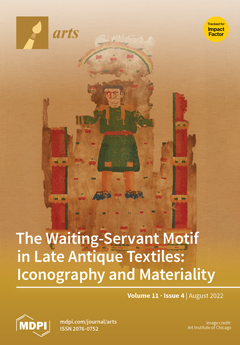Ambivalence is often regarded as a ‘negative’ emotion—an ‘ugly feeling’ as Sianne Ngai outlines—where not knowing and being unsure are seen as suspicious or mentally unhealthy. In this article, I outline the initial exploratory stage of the development of a new affective theory
[...] Read more.
Ambivalence is often regarded as a ‘negative’ emotion—an ‘ugly feeling’ as Sianne Ngai outlines—where not knowing and being unsure are seen as suspicious or mentally unhealthy. In this article, I outline the initial exploratory stage of the development of a new affective theory that I have termed ‘Unsure Theory’, in which ambivalence is observed as a mobile and aporetic state that, from an individual perspective, embraces the holding of multiple contradictory personal opinions. Unsure Theory also outlines ambivalence as an appropriate contemporary, meta-modernist response to late stage capitalism, our current socio-political moment, and its often negative impact on mental health. The aesthetics of ambivalence is explored through embracing a hesitant vernacular, an oscillating humorous, dry and ironic to sincere tone, and an internal, anecdotal first person voice that often addresses the reader. This exploration of Unsure Theory operates in an adjacent, feminist lineage of, and in homage to, Sad Girl Theory, as coined by writer, critic and artist Audrey Wollen, and Sick Woman Theory, by artist, writer and musician Johanna Hedva, as well as Lauren Fournier’s critical responses to both. Written within the genre of art writing and in reference to my own interdisciplinary creative practice, this article exemplifies autotheoretical writing as an extension of contemporary visual art practice. This article is partially situated within my own personal experience of Cognitive Behavioural Therapy from 2020–2022 and reading the autotheoretical novel
Chelsea Girls by Eileen Myles at the beginning of 2021. Through unpacking these personal experiences, I begin to outline an argument for embracing ambivalence, particularly within autotheoretical practice, where Unsure Theory seeks to repoliticise uncertainty towards a new generative, critical and personal perspective on not knowing.
Full article




